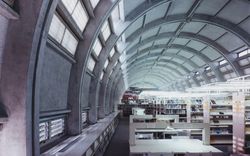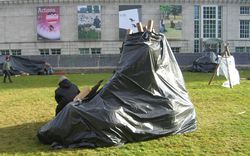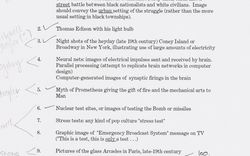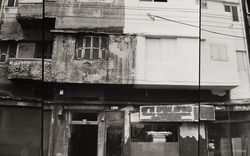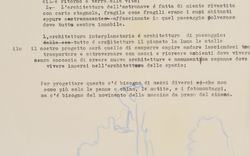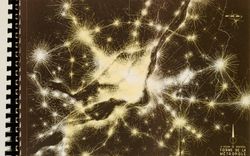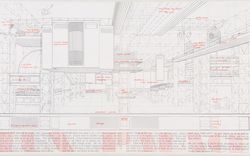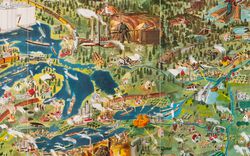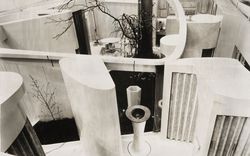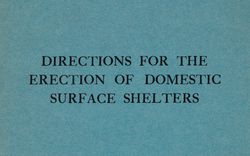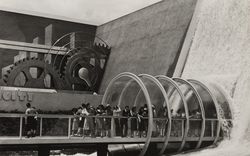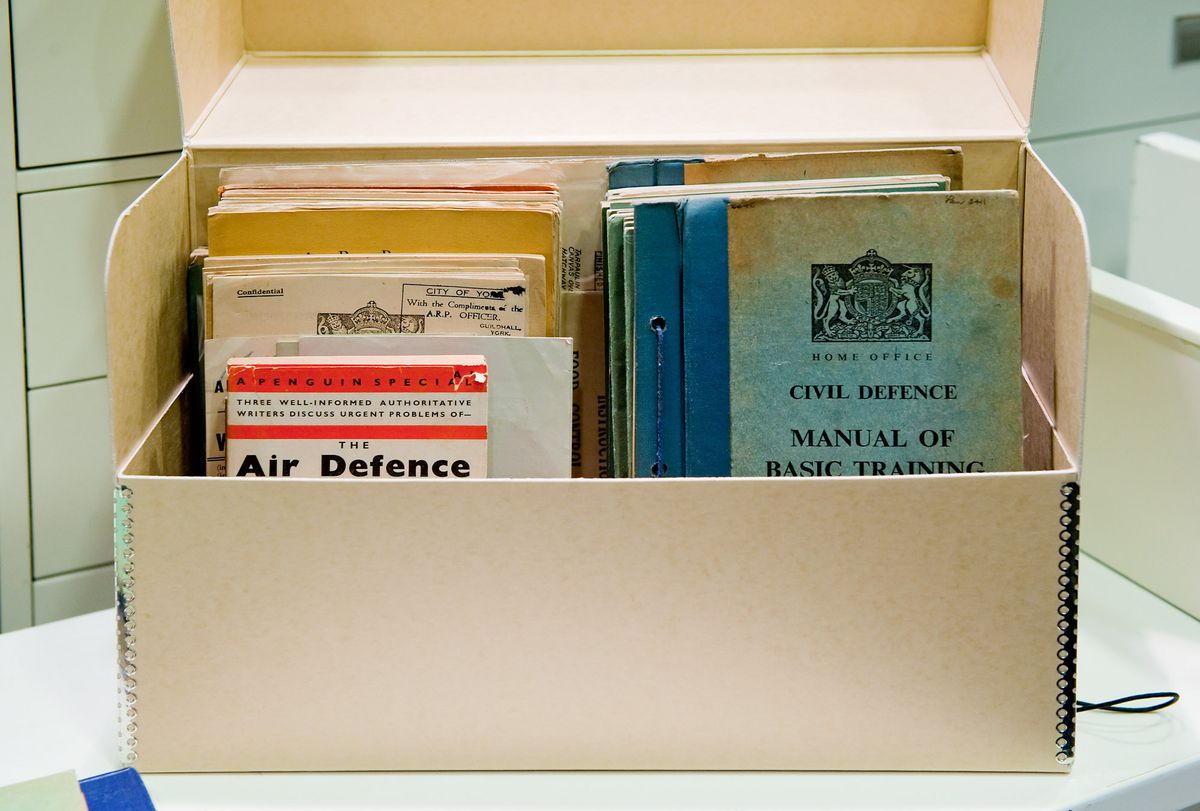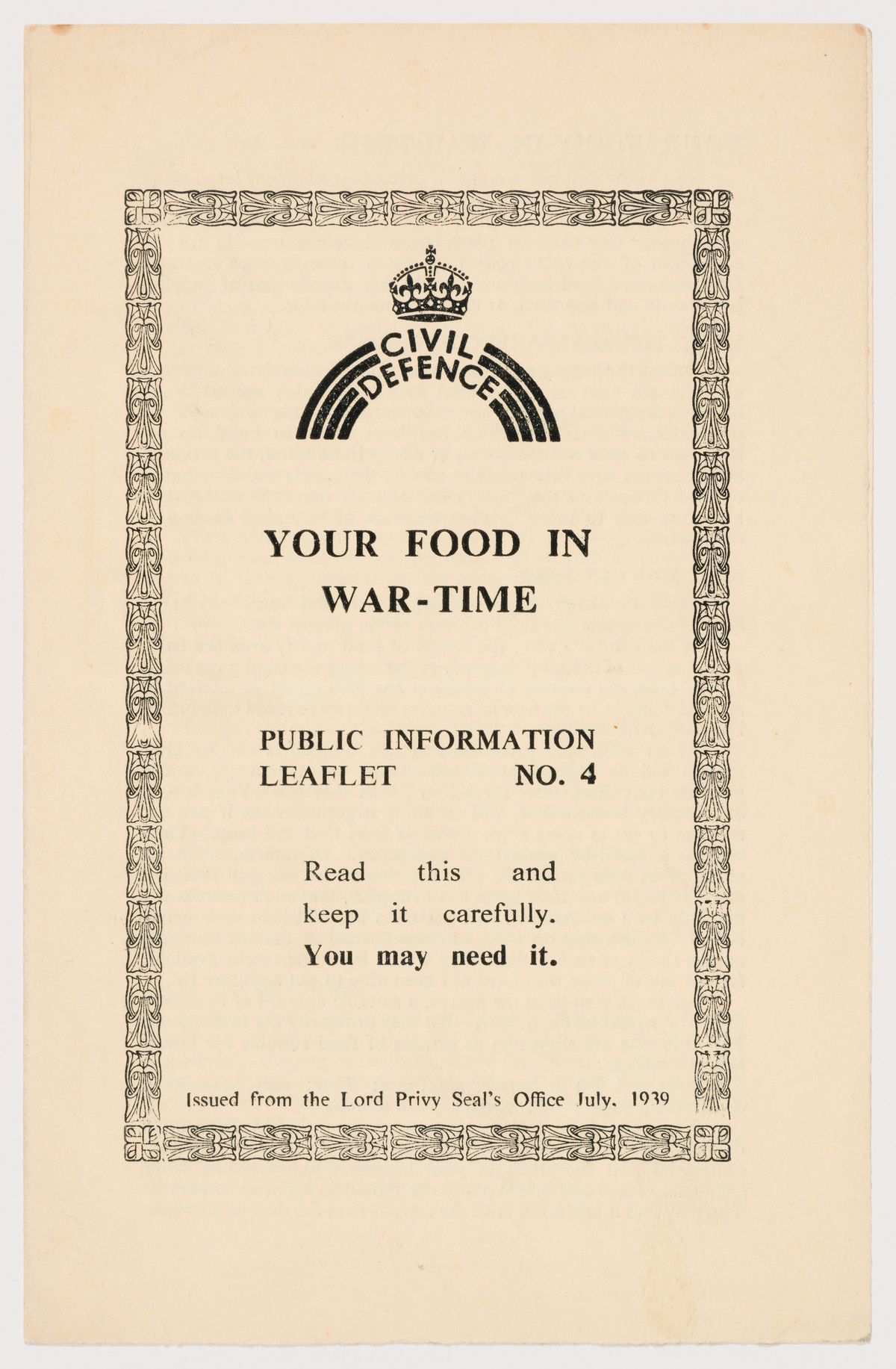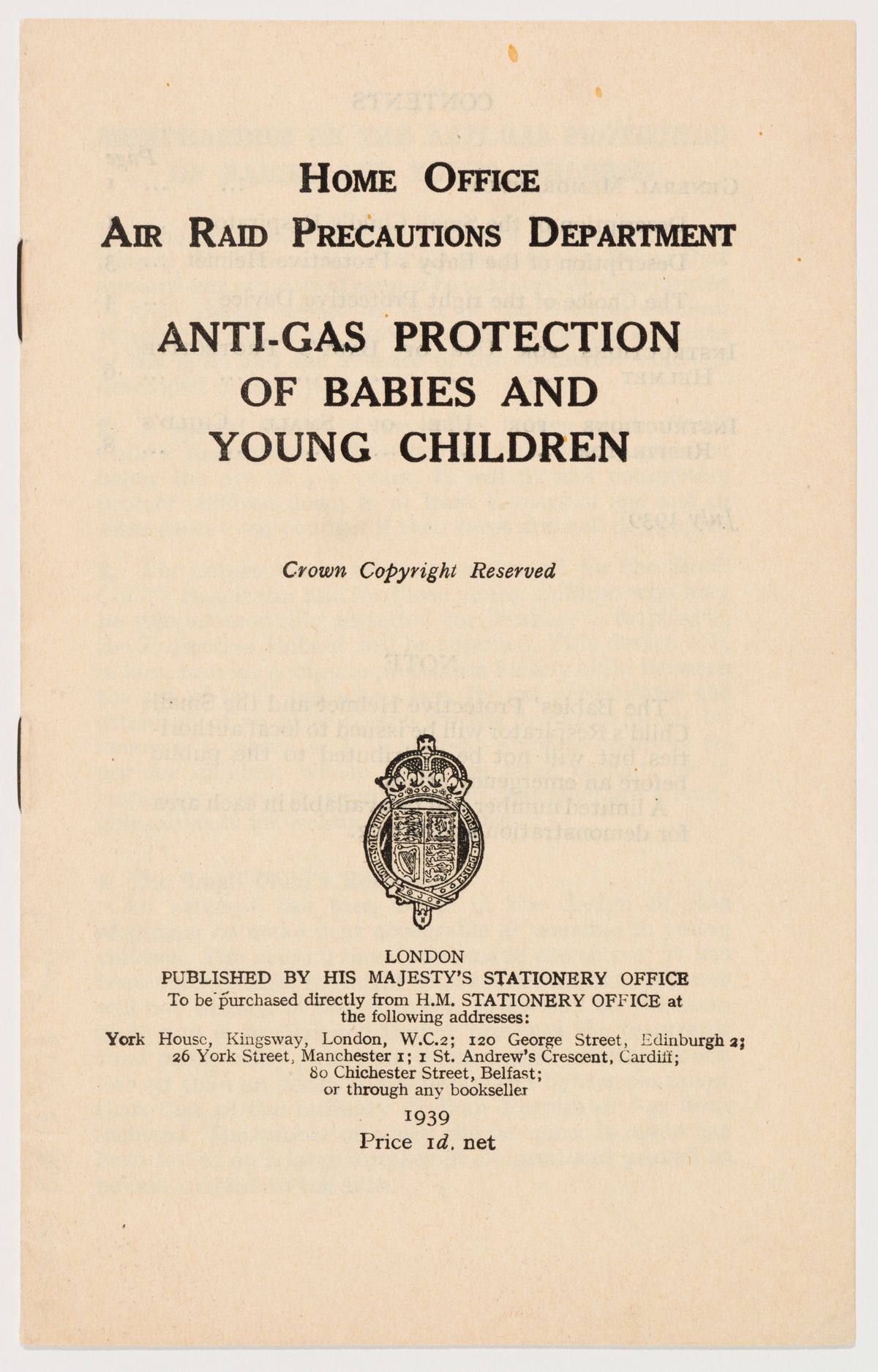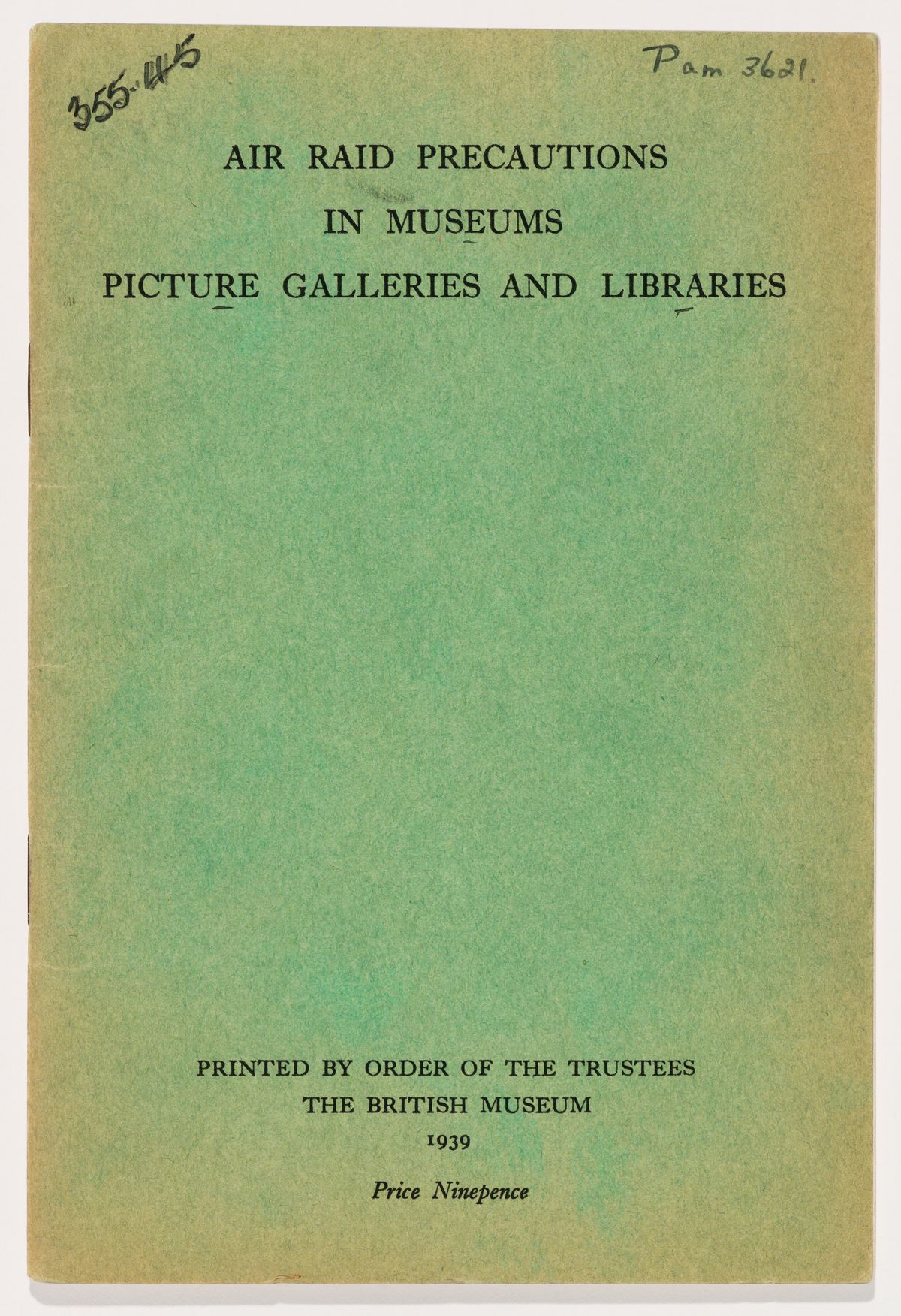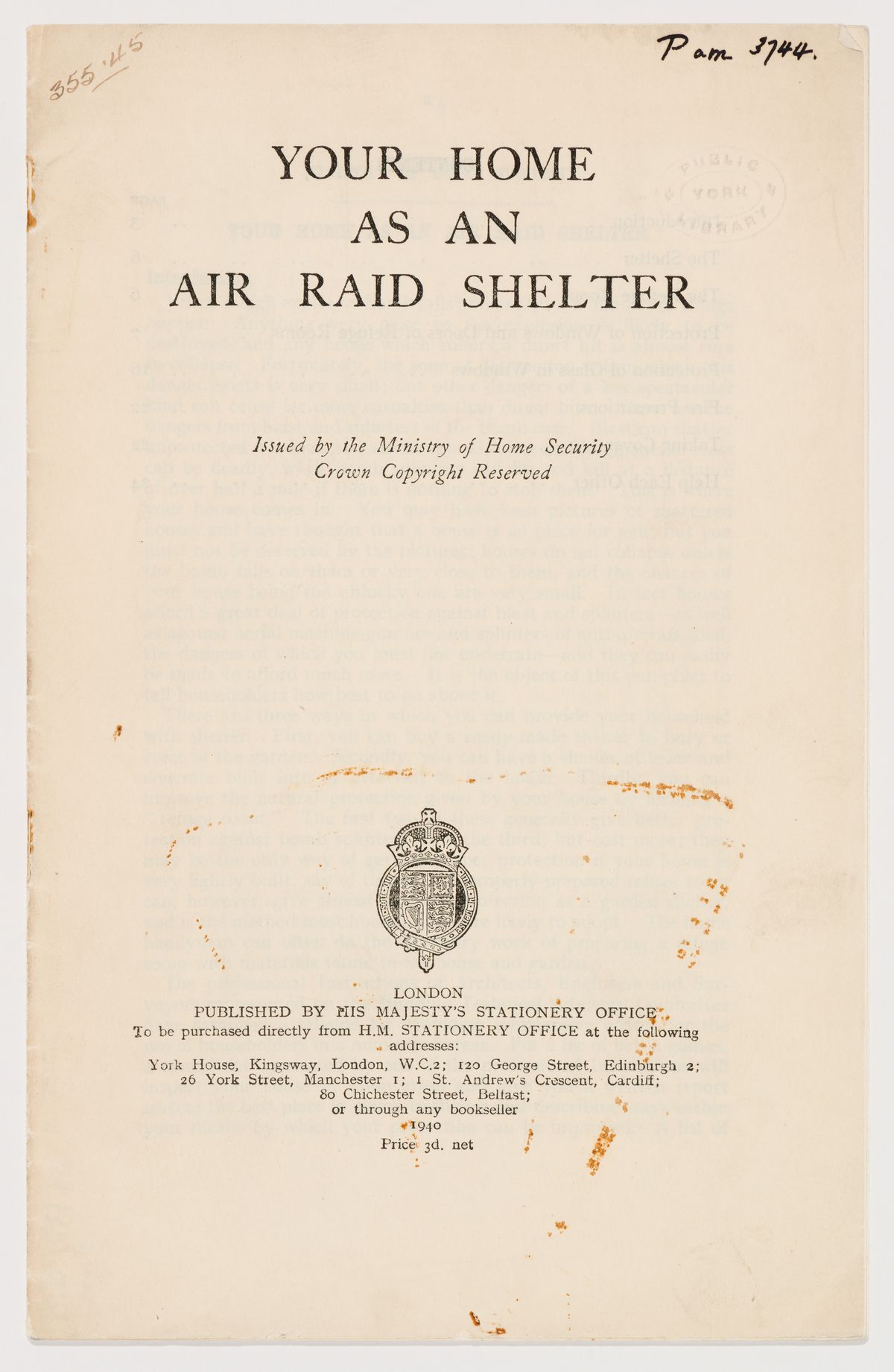1935: Your Home as an Air Raid Shelter
Text by David Monteyne
Two books and some sixty-one British government publications, discarded from the York Public Library, are filed together in a box in the CCA Collection. The publications are peppered with good advice and compelling line drawings depicting, with Churchillian aplomb, “desirable and undesirable features in buildings—considered from the point of view of the disruptive effects of aerial bombs.”
A history of World War II on the British home front can be read through the titles of the publications. The collection begins in 1935 with a Home Office publication entitled “Air Raid Precautions,” which opened by noting that its existence “in no way implies a risk of war in the near future.” Three years later, the Office registered increasing worry by issuing a “Pamphlet on Garden Trenches” (for personal bomb shelter) and “The Duties of Air Raid Wardens.” Handwritten notes in the latter publication note the names and locations for local wardens and other emergency personnel.
The 1939 publications witness preparation for war on a national scale. The Lord Privy Seal’s Office addressed citizens directly on “Some Things you Should Know if War Should Come”: air raid warnings, gas masks, blackouts, and so on. Industries and institutions were given guidance regarding “Camouflage of Large Installations” (including colour swatches) and “Air Raid Precautions in Museums, Picture Galleries and Libraries.”
By 1941, a different mode of preparation became pertinent: “Advising the Public in the Event of an Invasion.” The following year, mere advice gave way to “Consolidated Instructions to Invasion Committees (Confidential),” and statutes related to “War Zone Courts” and “Emergency Powers” of government.
The invasion never came, and the collection remains quiet until 1949, with the first of eighteen pamphlets bound together with blue string in a thick volume entitled “Civil Defence Manual of Basic Training.” Likely, these represent re- printings of World War II materials, as suggested by the addenda slips studiously pasted into the pamphlets by reference librarians, noting “the advent of the atomic bomb.”
This training manual for Cold War civil defence presents a bridge to present-day techniques of homeland security, as practised by architects and policymakers in the United States and elsewhere. As illustrated in this CCA collection spanning twenty years, the basics of Anglo-American civil defence had been established: shelters, both public and private; fire prevention and decontamination procedures; rescue and first aid; emergency mass feeding; and the hardening of buildings against attack, what the British called “structural defence.”
During the nascence of US civil defence, circa 1951, officials drew heavily on the British example in these publications. Through many bureaucratic transformations, the US civil defence agency became FEMA, which surrendered its responsibilities for enemy attack to the Department of Homeland Security after 9/11. Perusal of security design and planning manuals today reveal much the same characteristics determining “desirable and undesirable features in buildings,” whether seen from the point of view of “aerial bombs” or car bombs.
David Monteyne was a 2008–2009 Visiting Scholar at the CCA. A selection of these publications appeared in our 2011 exhibition Architecture in Uniform.
